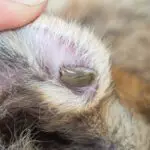How Fleas Can Change a Dog’s Behavior
While some dogs tolerate fleas, others experience severe allergic reactions and display bizarre behavior. These symptoms can include excessive scratching and chewing. The affected dog may also exhibit lethargy or become depressed. If you notice any of these symptoms in your dog, it is important to consult a veterinarian immediately. Fleas can also cause other serious conditions, including skin discolouration and secondary bacterial infections.
Fleas in dogs are difficult to spot, but they are tiny, black insects. You can see them by carefully parting your dog’s fur to reveal its skin. The most common areas to look for fleas are the abdomen and the inside of the hindquarters.
Fortunately, there are several flea treatments for dogs that are effective. Veterinary-recommended products include Revolution, Advantage II, and Bravecto. These products are available for both cats and dogs, and they must be applied by a veterinarian to get the most effective results. If your dog is an active swimmer, he may need a different type of flea product.
Fleas have four life stages. Adult fleas are able to live on an animal for months or even years. In this life cycle, they develop from eggs to adult fleas and then pupae. Once they reach adulthood, fleas will start to feed on a new host, and their life cycle begins again.








